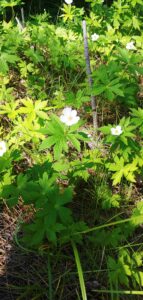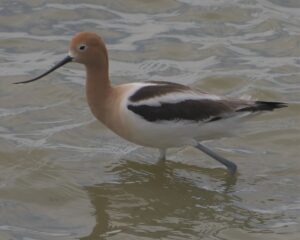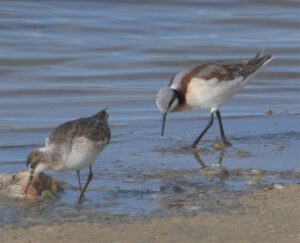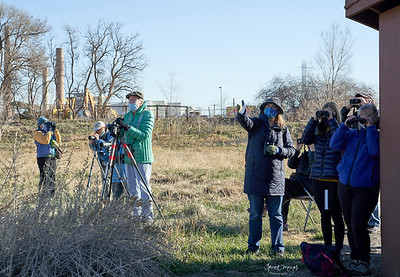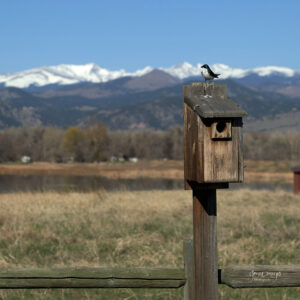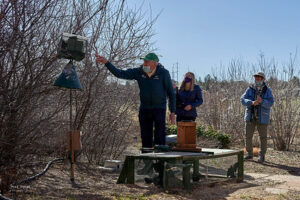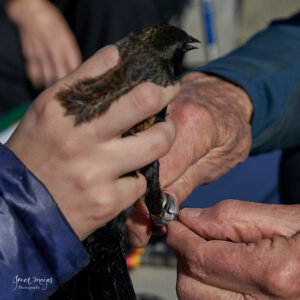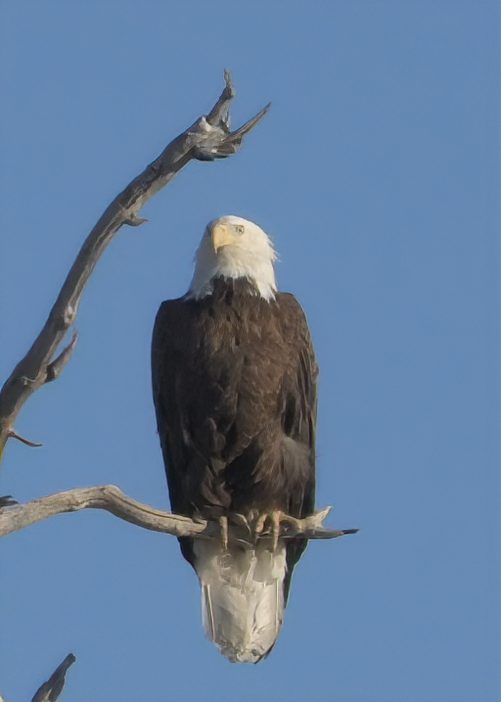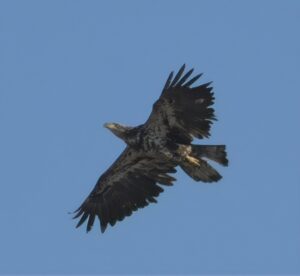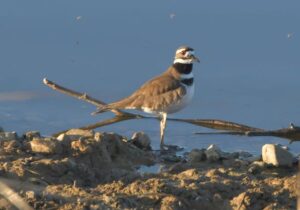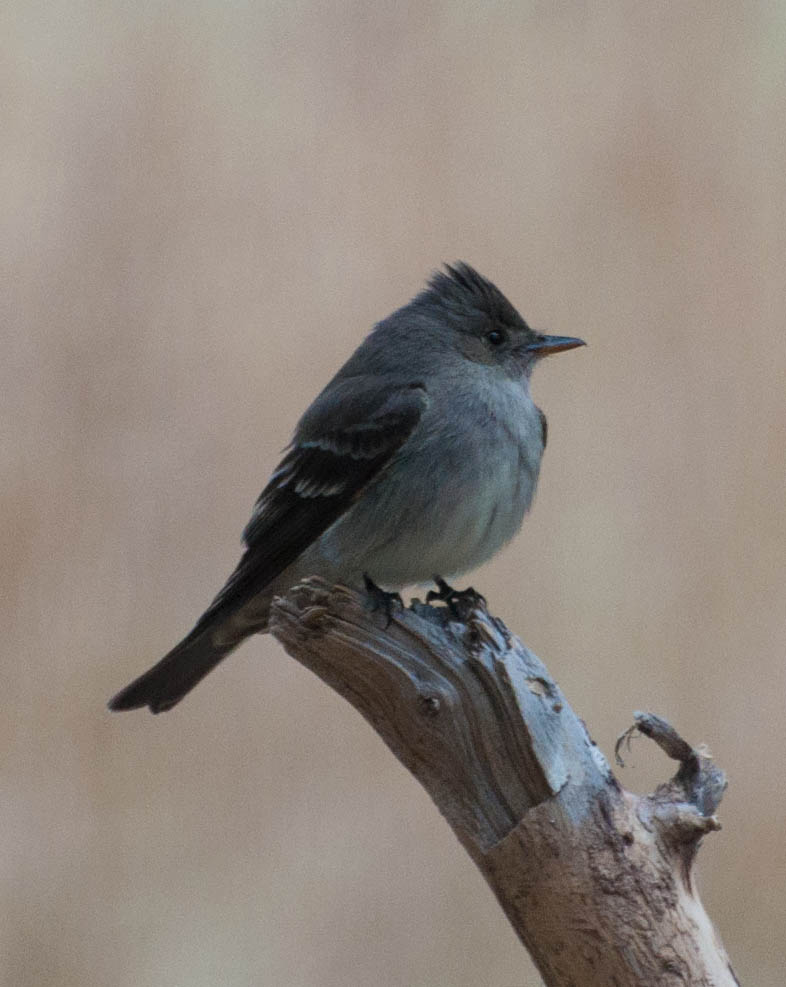
Walker Ranch is a fantastic place to go in summer for birds, butterflies, and blossoms. On Saturday, July 10th, 10 of us met up at the Meyer’s Gulch (also called Meyer’s Homestead) trailhead. Right off the bat we were greeted by a trio of mule deer bucks. A “bachelor herd” such as this one is usually comprised of immature males that have left their parent herd, but haven’t yet gained a harem of their own. These guys were almost completely unconcerned by us as we organized in the parking lot prior to our hike.
Every day is different when it comes to birding. While my Friday scouting trip was entirely bereft of bluebirds, a small flock put in an appearance to the delight of all on Saturday, including at least one immature bird distinguished by its spotted breast. Boulder County Open Space volunteers maintain the bluebird boxes along Meyer’s Gulch and Western (and sometimes Mountain) Bluebirds regularly set up shop in them. The mix of open Ponderosa woodland and meadow is the perfect habitat for Western Bluebirds, which are larger and a darker cobalt blue than their Eastern counterparts.
We also had a good day for sparrows. An especial treat was the pair of Lincoln’s Sparrows that made themselves known on the trek back to the parking lot. Lincoln’s Sparrows can often be confused for Song Sparrows and, to make it even more difficult, they can co-occur in the same wet meadow habitats. However, Lincoln’s Sparrows are smaller and more “refined” than their larger breathren with narrow, distinct breast streaks, a buffy wash on the breast, and often a more visible crest. They also often tend to be a little shyer and more retiring, but, happily, we were treated to great views of, and even some singing from, these subtly handsome birds.
Perhaps our most cooperative bird of the day was the Western Wood-Pewee. One of our most conspicuous flycatchers, this dull brown bird likes to sit upright on exposed perches, making it very easy to see. The same could not be said for the MacGillivray’s Warbler that we heard streamside, but that wouldn’t come out of the tangle of willows he was hidden in.
In addition to birds, we had a great day for butterflies. Just a few of the butterflies we saw were the hoary comma, Weidemeyer’s admiral, and several species of blue. They were particularly attracted to the wet sand and pools of water along sections of the trail, a behavior called “puddling,” that allows the butterflies to ingest salts and minerals they don’t get from feeding on nectar. A big thanks to Chris Friedman who helped us identify the many butterflies and skippers we encountered! Wildflowers of note included Indian paintbrush, meadow anemone, sulfur flower, and sticky geranium. All in all, a fantastic day!
Walker Ranch–Meyers Gulch
Jul 10, 2021
30 taxa
2 Mourning Dove
9 Broad-tailed Hummingbird
1 Red-tailed Hawk
2 Northern Flicker
4 Western Wood-Pewee
1 Hammond’s/Dusky Flycatcher
1 Cordilleran Flycatcher
2 Warbling Vireo
2 Steller’s Jay
3 Black-billed Magpie
3 American Crow
1 Black-capped Chickadee
8 Mountain Chickadee
1 Violet-green Swallow
1 Red-breasted Nuthatch
2 White-breasted Nuthatch
6 Pygmy Nuthatch
4 House Wren
6 Western Bluebird – FL
3 American Robin
2 Pine Siskin
1 Chipping Sparrow
1 Dark-eyed Junco (Gray-headed)
2 Vesper Sparrow
1 Song Sparrow
2 Lincoln’s Sparrow
1 Green-tailed Towhee
1 Spotted Towhee
1 MacGillivray’s Warbler
3 Western Tanager




